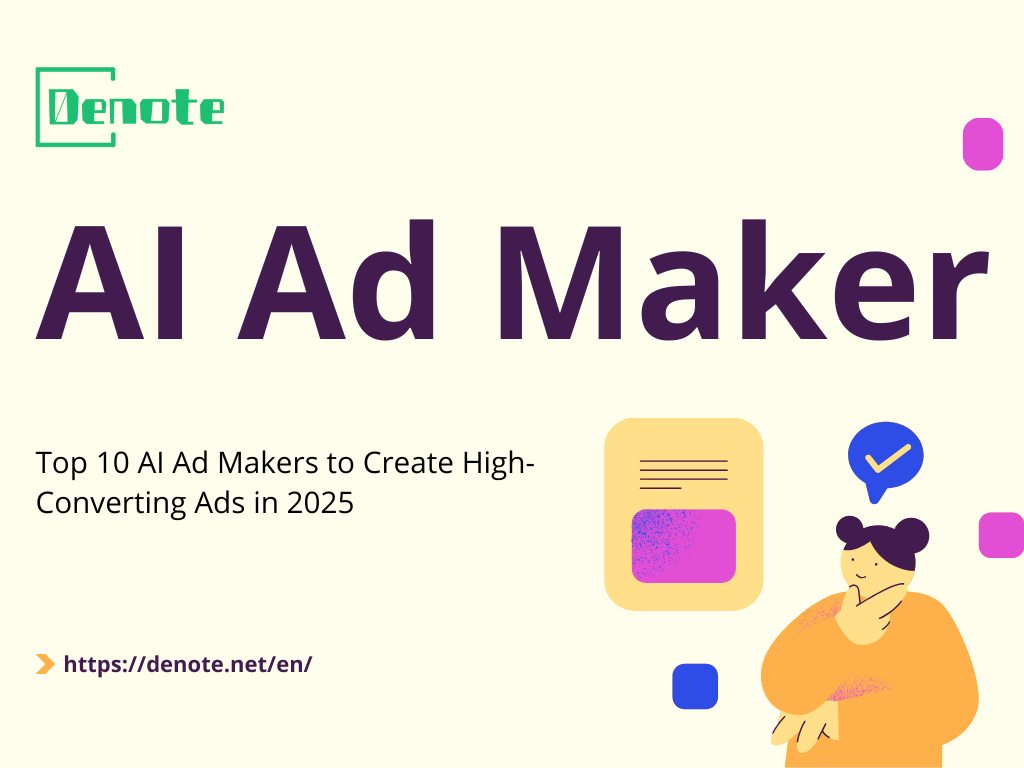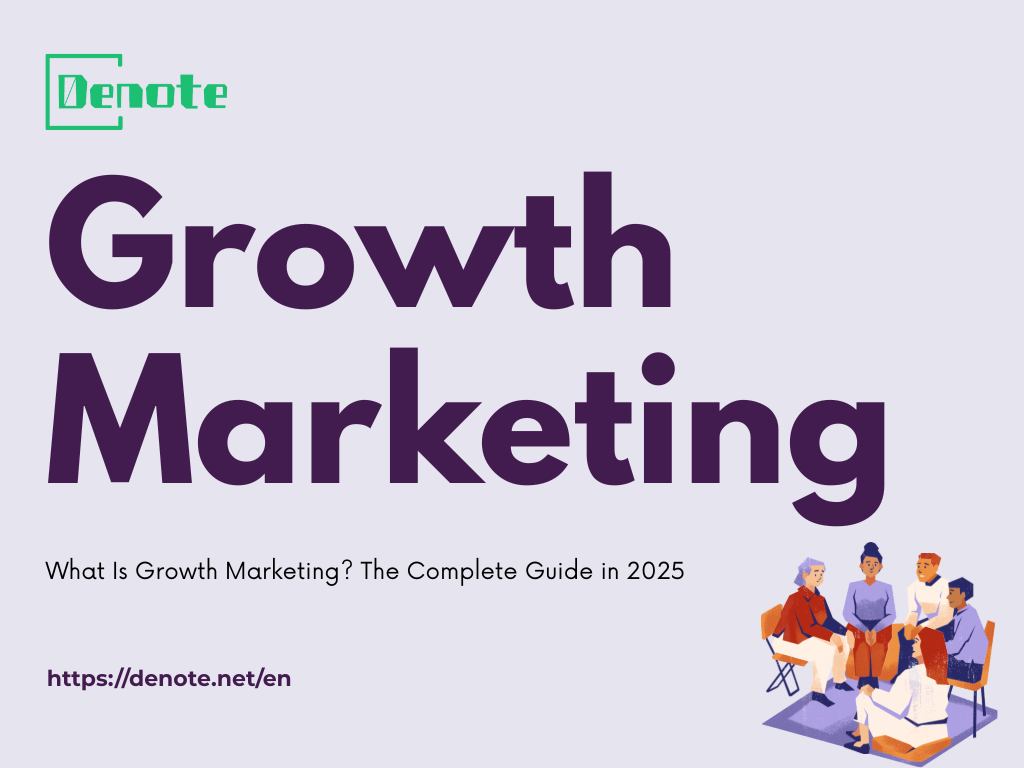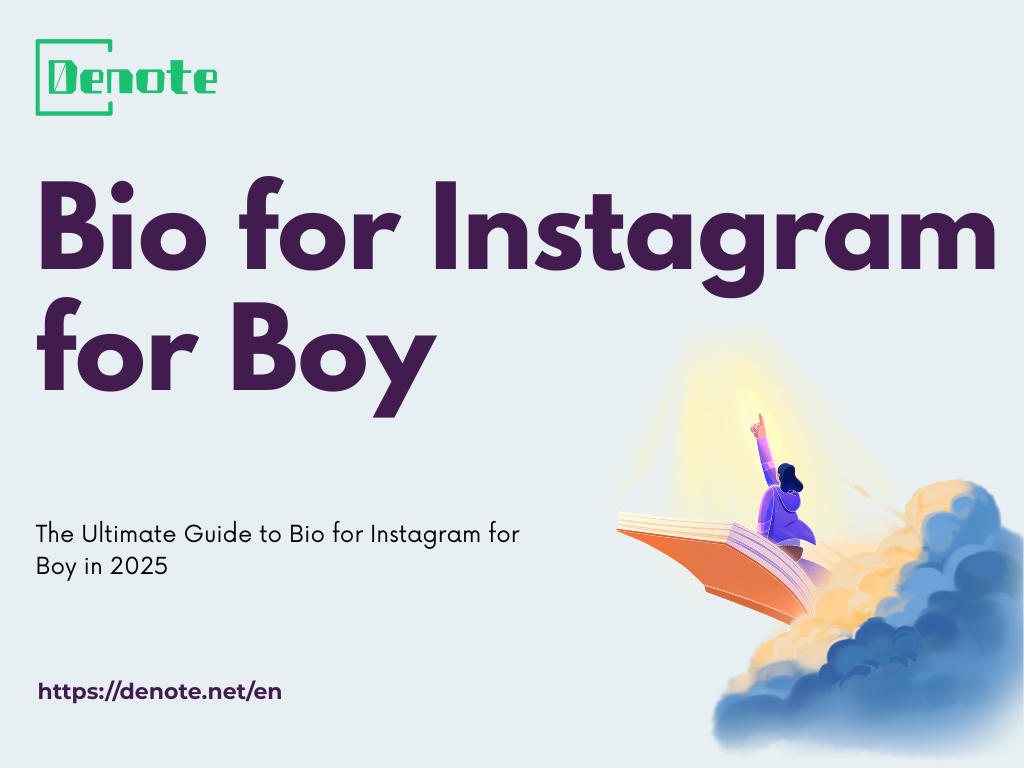Top 8 Facebook Ads Reporting Tools for Marketers in 2025
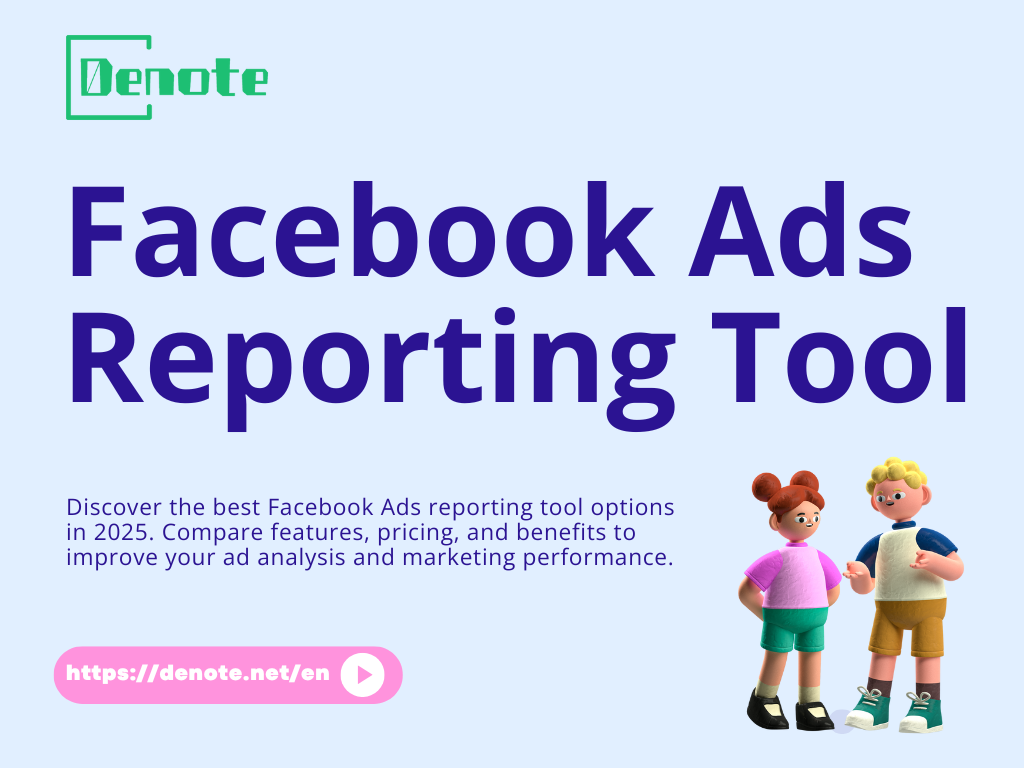
- Why Facebook Ads Reporting Matters More Than Ever
- What Defines a Great Facebook Ads Reporting Tool in 2025
- How We Chose the Top 8 Tools
-
The 8 Best Facebook Ads Reporting Tools You Should Know
- Denote – Competitor Ad Insights and Reporting
- Supermetrics – Advanced Data Pipelines
- Whatagraph – Visual Client Reports
- Swydo – Reporting with Workflows
- Funnel.io – Multi-Channel Data Warehouse
- DashThis – Easy Dashboards
- AgencyAnalytics – All-in-One Marketing Dashboard
- Databox – KPI Monitoring on the Go
- Comparing Performance: Which Facebook Ads reporting tool Excels Where
- Maximizing ROI with Facebook Ads reporting tool
- What’s Next: Emerging Trends in Facebook Ads Reporting
- Conclusion
Why Facebook Ads Reporting Matters More Than Ever
Running Facebook Ads in 2025 feels like steering a spaceship through a galaxy of data. Every campaign generates countless numbers—impressions, clicks, conversions, cost per acquisition, ROAS. On the surface, Facebook Ads Manager gives you dashboards and charts, but raw data without context can be overwhelming. This is where Facebook Ads Reporting Tools become the telescope: they let marketers zoom in on what truly matters, filter out the noise, and uncover patterns hidden in the stars.
In a digital era defined by tighter budgets, rising ad costs, and an audience that expects personalized experiences, reporting is no longer just “a nice-to-have.” It’s survival. The difference between a successful marketer and one who’s constantly putting out fires often comes down to whether they can interpret the data fast enough to make smart decisions.
Challenges in Native Facebook Reporting
Anyone who has tried relying solely on Facebook’s built-in Ads Manager knows the struggle. The interface is clunky, and while it provides a lot of data, it doesn’t always give you the right data in the right way. Exporting spreadsheets is time-consuming. Creating visual reports for clients can feel like assembling IKEA furniture without the manual—possible, but unnecessarily painful.
Another problem? Context. Facebook’s native reports rarely show how campaigns tie into the bigger picture. For example, if you’re running campaigns across Facebook, Instagram, Messenger, and even TikTok or Google, the Ads Manager doesn’t stitch that story together. You end up with a silo of numbers, but no narrative.
The Cost of Poor Insights
Poor reporting comes with a price tag. Imagine you’re a media buyer making decisions on incomplete or outdated data. You might double down on a campaign that looks good at first glance but is actually draining budget. Or worse, you might pause a campaign that’s quietly fueling long-term conversions because you can’t see beyond the surface-level metrics.
The cost isn’t just financial—it’s also about trust. Clients want transparency. Business leaders want to know their money isn’t vanishing into a digital black hole. Without clear, accurate, and visualized reporting, you risk losing credibility along with revenue. That’s why marketers are increasingly leaning on dedicated Facebook Ads Reporting Tools to fill these gaps and turn messy data into actionable insights.

What Defines a Great Facebook Ads Reporting Tool in 2025
So, what makes a reporting tool stand out in 2025? The digital marketing landscape has matured, and expectations are higher than ever. Marketers don’t just want numbers—they want stories, clarity, and speed.
Core Features to Expect
The best Facebook Ads Reporting Tools offer more than just dashboards. They deliver real-time data freshness, so you’re not making decisions based on yesterday’s performance. They give you customizable metrics, letting you define what success means for your business, whether that’s purchases, leads, or something more nuanced like assisted conversions.
Breakdowns by demographics, device type, or placement should be effortless. And let’s not forget data visualization—great tools turn dry numbers into visuals that even a CEO with five minutes of attention span can understand.
Usability and Automation
A strong reporting tool doesn’t just collect data; it makes life easier. Automation is key. Imagine setting up weekly or monthly reports that auto-deliver to your team or clients without lifting a finger. That’s not just convenience—it’s efficiency.
Usability is equally important. A tool should feel intuitive, not like a graduate-level statistics course. If your team spends more time figuring out how to use the reporting software than analyzing the insights, it defeats the purpose.
Integration, Scalability, & White-Label Needs
Modern marketers don’t just live in Facebook Ads Manager. They juggle data from Google Ads, TikTok, LinkedIn, and even email platforms. The right reporting tool integrates seamlessly across channels, so you get the full story in one place.
Scalability is another consideration. A solo freelancer might need a simple dashboard, but an agency handling 50 clients needs robust infrastructure. And then there’s white-labeling: agencies want to slap their logo on client reports to look polished and professional. Great reporting tools make that effortless.
How We Chose the Top 8 Tools
With so many reporting tools out there, narrowing it down to the top eight for 2025 wasn’t easy. We didn’t just pull names out of a hat—we carefully evaluated based on real-world marketer needs.
Evaluation Criteria
We considered:
- Ease of use: How quickly can a marketer set up reports?
- Depth of insights: Does the tool go beyond surface-level metrics?
- Customization: Can users tailor dashboards to unique goals?
- Automation: How well does it handle recurring reports?
- Pricing models: Is it accessible to freelancers, agencies, and enterprises?
- Client-friendly visuals: Because sometimes the presentation is half the battle.
Data Sources & Testing Method
Our analysis included hands-on testing, reading user reviews, and comparing feature lists across leading platforms. We also looked at how these tools performed in fast-paced campaign environments. Some were lightning-fast; others lagged behind. The final eight tools reflect a balance of performance, usability, and innovation.
The 8 Best Facebook Ads Reporting Tools You Should Know
| Tool | Key Capabilities | Best For / Who Should Use It | Limitations |
|---|---|---|---|
| Denote – Competitor Ad Insights and Reporting | • Competitor ad tracking across Facebook and multiple platforms • Automated reports on ad spend, duration, creative formats, and audience insights • Easy-to-read dashboards for ad performance benchmarking |
Marketers who want both campaign reporting and a peek into competitor strategies; agencies managing multiple industries | Shines in competitive research; not ideal for deep attribution modeling |
| Supermetrics – Advanced Data Pipelines | Connect Facebook Ads data directly to Google Sheets, Data Studio, Excel, or BI systems to build fully customized dashboards | Analysts and data-driven teams who prefer building their own reporting systems | Learning curve; can be overwhelming for those uncomfortable with spreadsheets or dashboard building |
| Whatagraph – Visual Client Reports | • Drag-and-drop dashboards • Automated scheduled reports • White-label customization for agencies |
Agencies that want sleek, client-ready visuals without spending hours formatting slides | Fantastic for visuals but less advanced customization for deep-dive analytics |
| Swydo – Reporting with Workflows | • Customizable KPIs • Client portals for easy access • Task management features alongside reporting |
Agencies that want to combine reporting with client workflow management | Interface may feel too basic for power users needing advanced data modeling |
| Funnel.io – Multi-Channel Data Warehouse | • Aggregates data from 500+ marketing platforms • Central “data warehouse” for harmonized metrics • Exports into Power BI, Tableau, Google Data Studio |
Enterprise teams and data-driven organizations needing deep control over data | Pricing can be heavy for small businesses; may feel overpowered for small-scale needs |
| DashThis – Easy Dashboards | • Pre-built templates for Facebook Ads reporting • Automated scheduled reports • Simple interface requiring little training |
Small agencies or freelancers who need reporting “out of the box” | Limited flexibility; advanced users may want more custom metrics or integrations |
| AgencyAnalytics – All-in-One Marketing Dashboard | • Cross-channel analytics in one platform • White-label dashboards for agencies • Automated recurring reports |
Agencies managing dozens of clients | Some advanced features only in higher-priced tiers, limiting scalability |
| Databox – KPI Monitoring on the Go | • Mobile-first dashboards • Real-time KPI alerts • Visual tracking of goals and trends |
Teams needing fast, accessible insights while traveling or executives needing quick snapshots | Customization more limited compared to enterprise BI solutions |
1. Denote – Competitor Ad Insights and Reporting
When it comes to balancing performance tracking with competitive intelligence, Denote stands out. Unlike many tools that focus solely on your own campaigns, Denote gives you a window into your competitors’ strategies while still providing robust reporting on your Facebook Ads performance.
Key Capabilities
- Competitor ad tracking across Facebook and multiple platforms
- Automated reports on ad spend, duration, creative formats, and audience insights
- Easy-to-read dashboards for ad performance benchmarking
Best For / Who Should Use It
Denote is perfect for marketers who want both campaign reporting and a peek into competitor strategies. Agencies managing multiple industries will especially appreciate how Denote uncovers trends that help them pitch smarter campaigns.
Limitations / Trade-Offs
Denote shines in competitive research and reporting, but if you’re looking for deep attribution modeling across dozens of data points, you may want to pair it with a BI tool.
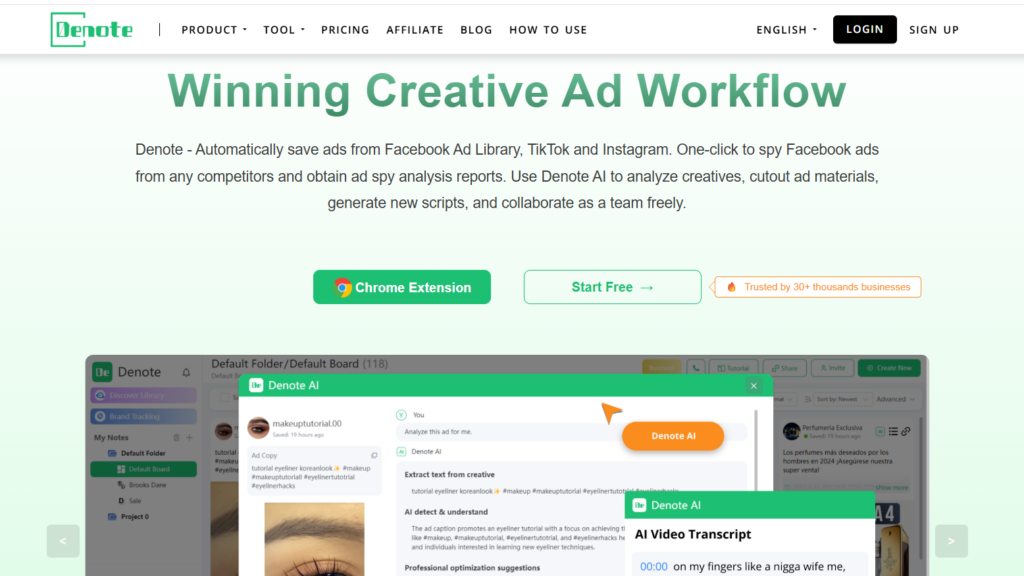
2. Supermetrics – Advanced Data Pipelines
If spreadsheets and BI tools are your playground, Supermetrics is the power tool you’ve been looking for.
Key Capabilities
Connect Facebook Ads data directly to Google Sheets, Data Studio, Excel, or even advanced BI systems. This allows marketers to build fully customized dashboards that fit unique workflows.
Best For
Analysts and data-driven teams who prefer to build their own reporting systems rather than rely on pre-built dashboards.
Limitations
Supermetrics has a learning curve. If you’re not comfortable with spreadsheets or dashboard building, it can feel overwhelming.
3. Whatagraph – Visual Client Reports
Some tools are built for analysts, but Whatagraph is built for presentation.
Key Capabilities
- Drag-and-drop dashboards
- Automated scheduled reports
- White-label customization for agencies
Best For
Agencies that want sleek, client-ready visuals without spending hours formatting slides.
Limitations
Whatagraph is fantastic for visuals but offers less advanced customization for analysts who want deep-dive modeling.
4. Swydo – Reporting with Workflows
Swydo sits at the intersection of reporting and project management.
Key Capabilities
- Customizable KPIs
- Client portals for easy access
- Task management features alongside reporting
Best For
Agencies that want to combine reporting with client workflow management in one place.
Limitations
The interface is practical but may feel too basic for power users looking for advanced data modeling.
5. Funnel.io – Multi-Channel Data Warehouse
If Denote is like a sharp scalpel and Supermetrics a flexible toolkit, then Funnel.io is a full-blown operating theater. This is the tool for marketers who want to gather not just Facebook Ads data but also information from hundreds of other platforms and stitch them together into one giant database.
Key Capabilities
- Aggregates data from over 500 marketing platforms, including Facebook Ads, Google Ads, and e-commerce sources.
- Provides a central “data warehouse” where marketers can harmonize metrics.
- Allows exports into visualization tools like Power BI, Tableau, or Google Data Studio.
Best For
Enterprise teams and data-driven organizations that have outgrown simple dashboards and want deep control over data architecture.
Limitations
The pricing structure can be heavy for small businesses. Funnel.io is powerful, but it’s like buying a Formula 1 car when all you need is a bicycle.
6. DashThis – Easy Dashboards
Not every marketer wants to be knee-deep in pivot tables. DashThis caters to those who want simplicity without compromising essential insights.
Key Capabilities
- Pre-built templates specifically designed for Facebook Ads reporting.
- Automation that delivers scheduled reports to your inbox.
- Simple interface that requires little training.
Best For
Small agencies or freelancers who need reporting tools that work “out of the box” with minimal setup.
Limitations
Flexibility is limited. Advanced users might find themselves wishing for more custom metrics or integrations.
7. AgencyAnalytics – All-in-One Marketing Dashboard
Think of AgencyAnalytics as the Swiss Army knife of marketing dashboards. It doesn’t just focus on Facebook Ads reporting but covers SEO, PPC, email, and social.
Key Capabilities
- Cross-channel analytics in one platform.
- White-label dashboards for agencies.
- Automated recurring reports.
Best For
Agencies that manage dozens of clients and want one tool to rule them all.
Limitations
Some advanced features are only available on higher-priced tiers, which can limit scalability for smaller agencies.
8. Databox – KPI Monitoring on the Go
Databox is for marketers who want their reports in their pocket.
Key Capabilities
- Mobile-first dashboards that look great on any device.
- Real-time KPI alerts to notify you when metrics spike or drop.
- Visual tracking of goals and performance trends.
Best For
Teams that need fast, accessible insights while traveling or executives who want quick snapshots rather than deep dives.
Limitations
Customization is more limited compared to enterprise BI solutions.
Comparing Performance: Which Facebook Ads Reporting Tool Excels Where
No two businesses are alike, and no two Facebook Ads Reporting Tools serve every purpose equally well. Here’s how they stack up:
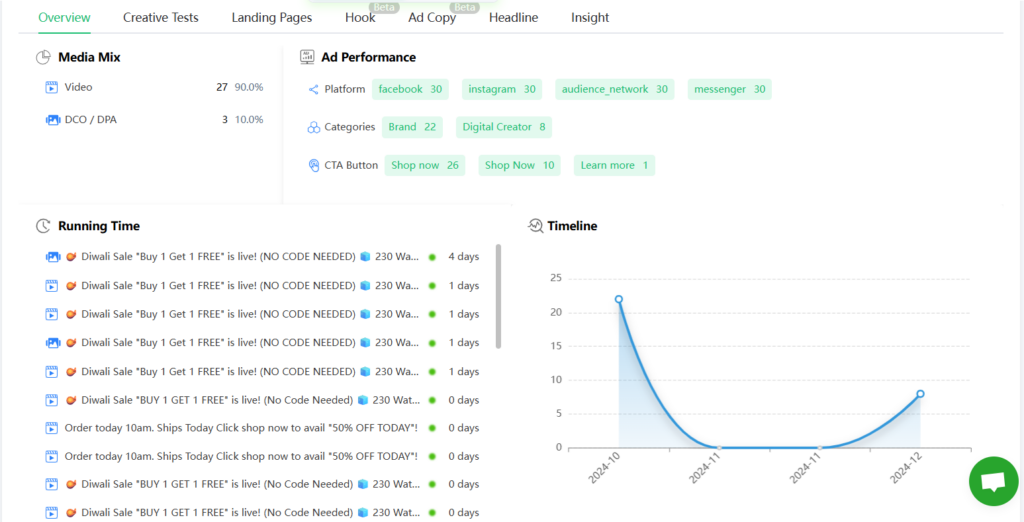
Best for Agencies vs In-House Marketers
- Agencies: Tools like AgencyAnalytics, Whatagraph, and Swydo shine because of white-label features and client portals.
- In-House Teams: Denote and Funnel.io provide more depth for campaign analysis and competitor benchmarking.
Best Visuals / Dashboards / Client Reporting
If you want something that wows clients in a boardroom, Whatagraph and DashThis are the top contenders. Their dashboards are designed to look polished without requiring design expertise.
Best Budget / Pricing Models
Freelancers often gravitate toward DashThis for affordability, while growing agencies lean into Denote because it balances cost with unique competitive insights. Enterprises may invest in Funnel.io or Supermetrics for data depth.
Notice how Denote appears again here—it’s often the middle ground between simplicity and advanced features, which makes it attractive to marketers managing multiple client portfolios.
Maximizing ROI with Facebook Ads Reporting Tool
Buying the right reporting tool is only half the battle. Getting ROI out of it requires smart implementation.
Building a Reporting Workflow That Scales
The best approach is to design a reporting “assembly line.” Automate recurring tasks like pulling weekly data, but also set up flexible dashboards for ad-hoc questions. When your system is scalable, adding more campaigns or clients doesn’t double your workload.
Common Pitfalls & How to Avoid Them
One common trap is data overload—marketers include every metric under the sun and drown their audience in numbers. Remember: your CFO doesn’t care about CTR by device type; they care about cost per sale. Another pitfall is ignoring context. Numbers without narrative are just noise.
Tips for Presenting Reports to Stakeholders
Frame your reports like stories. Instead of saying, “CTR improved by 1.2%,” say, “Our creative refresh brought more engaged clicks, which signals our messaging is resonating better with younger demographics.” Numbers are the skeleton; storytelling is the muscle.
What’s Next: Emerging Trends in Facebook Ads Reporting Tool
The world of digital advertising doesn’t stand still, and neither do reporting tools.
AI-Driven Insights & Predictive Analytics
By 2025, more Facebook Ads Reporting Tools are leaning into AI. Instead of manually analyzing patterns, AI engines can suggest next steps—such as reallocating budget or highlighting creatives that are trending positively.
Privacy, Attribution Shifts, and Signal Loss
Apple’s iOS updates and cookie deprecation have made attribution harder. Expect tools to develop smarter models that account for “invisible conversions.” The tools that solve attribution pain points will dominate the market.
Cross-Channel & Omnichannel Reporting
No brand is only on Facebook anymore. The best tools will merge Facebook, TikTok, YouTube, and even offline sales into one coherent story. The days of siloed reporting are numbered.
Conclusion
In 2025, Facebook Ads Reporting Tools are not optional—they’re essential survival gear in the marketer’s toolkit. Whether you’re a solo freelancer who just needs a clean dashboard or an enterprise-level team stitching together hundreds of data sources, there’s a tool designed for your needs.
At the end of the day, the best tool is the one that helps you make smarter, faster decisions with confidence. Think of it like a compass: it doesn’t walk the path for you, but it ensures you’re heading in the right direction.
So, whether you’re building sleek client reports or trying to uncover why one campaign outperforms another, invest in the right reporting partner. Your ads deserve more than guesswork—they deserve clarity, and the right Facebook Ads Reporting Tool gives you exactly that.


